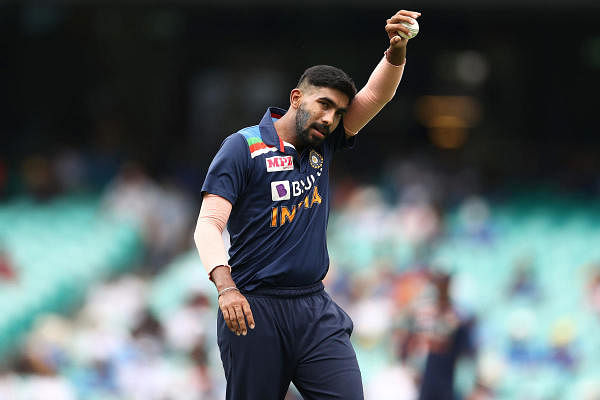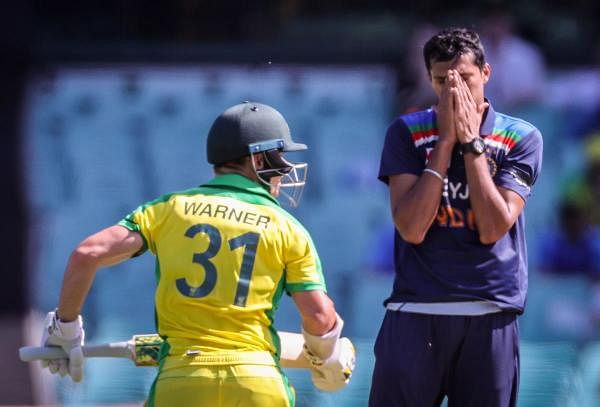
If you are a 1980s kid and learnt the nuances of cricket in the early part of the next decade, watching the sport in Australia was something you would have looked forward to every Christmas season. Admiring those picturesque grounds, listening to the voices of Richie Benaud, Bill Lawry and Tony Greig and most importantly, seeing pace bowlers steaming in on those fast and bouncy pitches, it was some package. But how things have changed now!
The two of the famed voices which called the action have attained heavenly abode while Lawry, 83 years old, doesn’t commentate anymore. And the pitches, which every fast bowler worth his salt loved, have now become so flat and docile in limited overs cricket that the same pacers now dread being handed the white-ball. So much so, even the Australians, born and bred on the very same tracks, are finding the going difficult.
Take the just concluded India-Australia ODI series where a whopping 2000 runs were scored in just three matches, just 90 short of the record runs posted in the India-England series in India in 2016-17 season. The lowest score posted by a side in the series was 289 all out by Australia in the inconsequential third game, while in the remaining five innings 300 was breached, and most of the times quite comfortably. Yes, both sides have fine batsmen at their disposal but the quality of fast bowlers in no less either.
India had Jasprit Bumrah, perhaps the best all-weather pacer in the world, the incisive Mohammed Shami and youngsters Navdeep Saini, T Natarajan and Shardul Thakur. Australia had Mitchell Starc, Josh Hazlewood, Pat Cummins, and Sean Abbott. But none of them was able to stop the batsmen from plundering runs. So what has happened to the Australian pitches that have totally become a batsmen’s paradise?
“The pitches for limited-overs have totally changed,” Joe Dawes, former Australia cricketer who worked as a bowling coach with the Indian team, told DH. “There’s no grass, no pace, no bounce. It’s just a flat road and batsmen just have a good time zipping up and down at high speed! For the Tests it is still challenging but for ODIs and T20s, there’s nothing in it. Can’t blame the bowlers for what’s happening. They are at a complete disadvantage the moment they enter the field. The margin for error is very minuscule. Sadly, that’s what authorities want. They want runs, more runs, in fact a lot of runs. Fans like seeing the ball being smashed around. So unless there’s a change in mindset, we are going to see 300 being breached quite often in the future as well.”
Former India pacer Ajit Agarkar, who is in the commentary panel for the series with broadcasters Sony, reckons the new field restrictions in place since August 2019 have contributed immensely to the problems bowlers are facing not just in Australia but even in England and South Africa, both countries where traditionally the quicks liked operating. “More than the pitches, the five fielders inside the ring (during the middle overs) is a lot more harder on the bowlers. There’s always a gap to be found, the batting skills have gone up. With so much T20 cricket, batsmen now have more courage to keep taking chances than earlier times. Five fielders inside the ring is quite tough on the bowlers,” said the Mumbaikar.
Another rule that has tilted the balance in favour of the batsmen is the introduction of two new balls for an innings. Even the great Sachin Tendulkar, in a 2018 tweet that gained a lot of traction, slammed the ICC for introducing this law that takes reverse swing completely out of the equation as the balls remain relatively hard till the end. The sub-continental fast bowlers banked on this particular skill largely to outsmart the batsmen once the ball got scuffed but now, with the ball staying fresh for longer duration, reverse has gone out of the equation.
“The outfields are lush and with the ball not getting roughed up that much, it’s very difficult to get the ball to reverse, which was a very important weapon in a bowler’s arsenal,” pointed out Agarkar. “There’s a lot of talk about the Kookaburra ball having changed complexion completely. It doesn’t swing that much even in the first few overs which it used to quite consistently. That’s not helped the bowlers. Two new white balls is something which the authorities can look at if you still have five fielders inside the ring. Even if there’s a little bit of help for the bowlers during the end of the innings, it makes a huge difference.”
With so much stacked up against them, bowlers need to think out of the box. Gone are the days of just bowling fast, full and straight. And they’ve added several tricks up their sleeve, the slower bouncer, yorker wide of off-stump, the knuckle ball and constantly removing the pace off it. Even spinners have started to bowl a bit wide and keep changing the pace, trying to remove the predictability.
Dawes felt that’s the only option to limit the damage. “A bowler needs to have varieties now. If not, he is prone to punishment. He is got to keep trying different things. You’ve seen mishits flying for six, batsmen trying scoop shots and switch-hits. When batsmen have innovated themselves, bowlers also need to keep evolving. The more tricks up their sleeve, the better it is. But that doesn’t mean they forget their basic skill. For a fast bowler, the yorker is still the best weapon when you get it right. Nothing much a batsman can do with that ball.”
